Discovering Praha - Part 1
I used the last couple of days to discover some more of the city i will be living in by following the advice in my Lonely Planet and taking some of the walking tours suggested there.
The first walk I took is called "Around Wenceslas Square" (Václavské náměstí) which is one of the main city squares and the centre of the business and cultural communities in the New Town.
It starts at the neo-Renaissance National Museum, which dominates the upper end of Wenceslas Square. From the steps you have a grand view down the square:
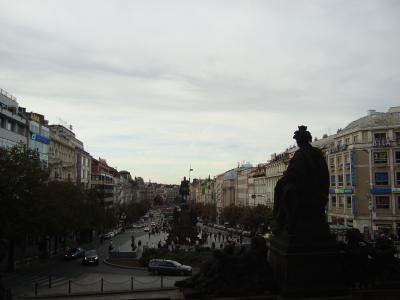
There is also a pavement memorial to student Jan Palach and Jan Zajic who committed suicide by self-immolation as a political protest, a symbolic event often taken to be central to events which led to the fall of the Iron Curtain. Jan Palach set himself on fire in front of the National Museum, the memorial marks the spot where he broke down:

If you cross the street, you stand in front of one of Prague's famous landmarks, the equestrian statue of Saint Wenceslas, the patron saint of Bohemia:
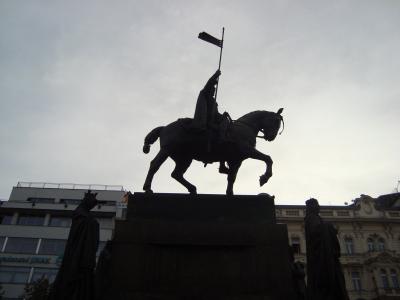

Here you can see the National Museum in the background of the statue
Below the statue is a modest memorial to those who died for their resistance to communism:
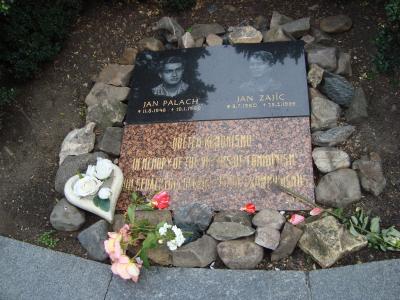

beautiful view over Wenceslas Square
If you wander down the middle of the square, you can admire grand buildings on either side - the finest is the 1906 Art Nouveau Grand Hotel Europa at No 25:
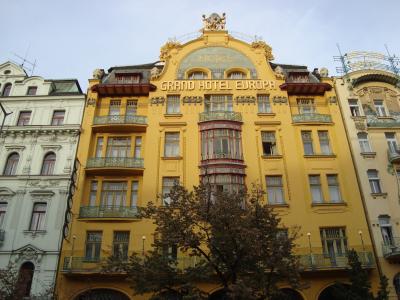
Across the street at No 36 is the Melantrich Building, from whose balcony the obituary of Czech communism was pronounced by Alexander Dubček and Václav Havel on 24 November 1989:
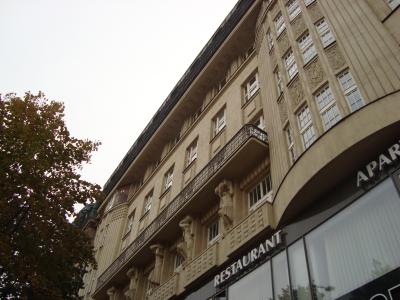
Nearby the Grand Hotel Europa is a shopping arcade that leads to the central atrium of the Lucerna Palace, graced by David Černý's ironic twist on the Wenceslas statue in the square outside:
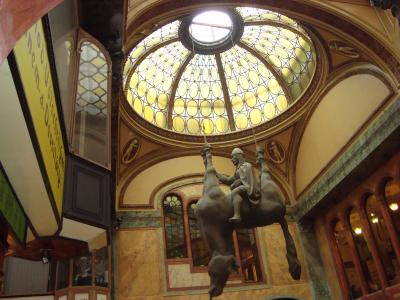
If you follow the arcade to Vodičková and enter the Světozor arcade, you'll see a stained-glass window dating from the late 1940s that's actually an advertisement for Tesla Radio:
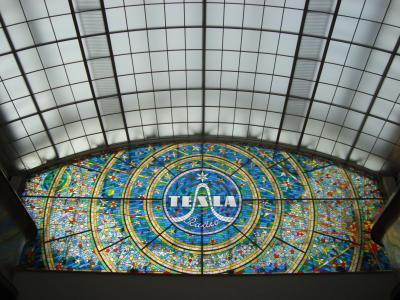
At the arcade's far end, you can turn left into the Františkánská zahrada (Franciscan Gardens), a hidden oasis of peace and greenery:
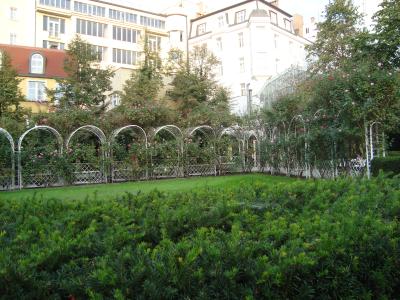
Follow the exit to Jungmannovo náměstí and go past the arch leading to the kostel Panny Marie Sněžné (Church of Our Lady of the Snows):
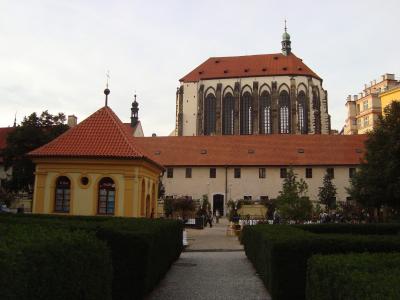
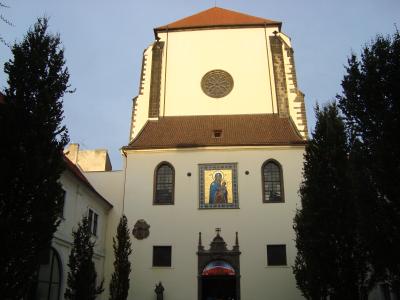
Keep to the right of the Lancôme shop, and you'll come to what must be the only Cubist lamppost in the world, dating from 1915:
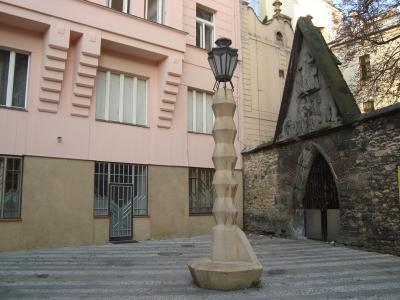
Turn left and walk through the short Lindt Arcade to return to Wenceslas Square at its foot. If you look up, you'll see the last stop of this tour, the Art Nouveau Koruna Palace with its crown of pearls:

I'll tell you a bit more about the latest discoveries in my next entries and leave you with a Czech song that's in the Top Single Charts right now and which I really like (have fun trying to figure out what he is singing about... :D ):
http://www.youtube.com/watch?v=KVTVJ4WGURo
(unfortunately the official video is blocked by the Gema, so this is the link for everyone who is not in Germany right now ;) : http://www.youtube.com/watch?v=9rNrTWquayE&feature=related )
The first walk I took is called "Around Wenceslas Square" (Václavské náměstí) which is one of the main city squares and the centre of the business and cultural communities in the New Town.
It starts at the neo-Renaissance National Museum, which dominates the upper end of Wenceslas Square. From the steps you have a grand view down the square:

There is also a pavement memorial to student Jan Palach and Jan Zajic who committed suicide by self-immolation as a political protest, a symbolic event often taken to be central to events which led to the fall of the Iron Curtain. Jan Palach set himself on fire in front of the National Museum, the memorial marks the spot where he broke down:

If you cross the street, you stand in front of one of Prague's famous landmarks, the equestrian statue of Saint Wenceslas, the patron saint of Bohemia:


Here you can see the National Museum in the background of the statue
Below the statue is a modest memorial to those who died for their resistance to communism:


beautiful view over Wenceslas Square
If you wander down the middle of the square, you can admire grand buildings on either side - the finest is the 1906 Art Nouveau Grand Hotel Europa at No 25:

Across the street at No 36 is the Melantrich Building, from whose balcony the obituary of Czech communism was pronounced by Alexander Dubček and Václav Havel on 24 November 1989:

Nearby the Grand Hotel Europa is a shopping arcade that leads to the central atrium of the Lucerna Palace, graced by David Černý's ironic twist on the Wenceslas statue in the square outside:

If you follow the arcade to Vodičková and enter the Světozor arcade, you'll see a stained-glass window dating from the late 1940s that's actually an advertisement for Tesla Radio:

At the arcade's far end, you can turn left into the Františkánská zahrada (Franciscan Gardens), a hidden oasis of peace and greenery:

Follow the exit to Jungmannovo náměstí and go past the arch leading to the kostel Panny Marie Sněžné (Church of Our Lady of the Snows):


Keep to the right of the Lancôme shop, and you'll come to what must be the only Cubist lamppost in the world, dating from 1915:

Turn left and walk through the short Lindt Arcade to return to Wenceslas Square at its foot. If you look up, you'll see the last stop of this tour, the Art Nouveau Koruna Palace with its crown of pearls:

I'll tell you a bit more about the latest discoveries in my next entries and leave you with a Czech song that's in the Top Single Charts right now and which I really like (have fun trying to figure out what he is singing about... :D ):
http://www.youtube.com/watch?v=KVTVJ4WGURo
(unfortunately the official video is blocked by the Gema, so this is the link for everyone who is not in Germany right now ;) : http://www.youtube.com/watch?v=9rNrTWquayE&feature=related )
christina_abroad - 29. Sep, 17:47
